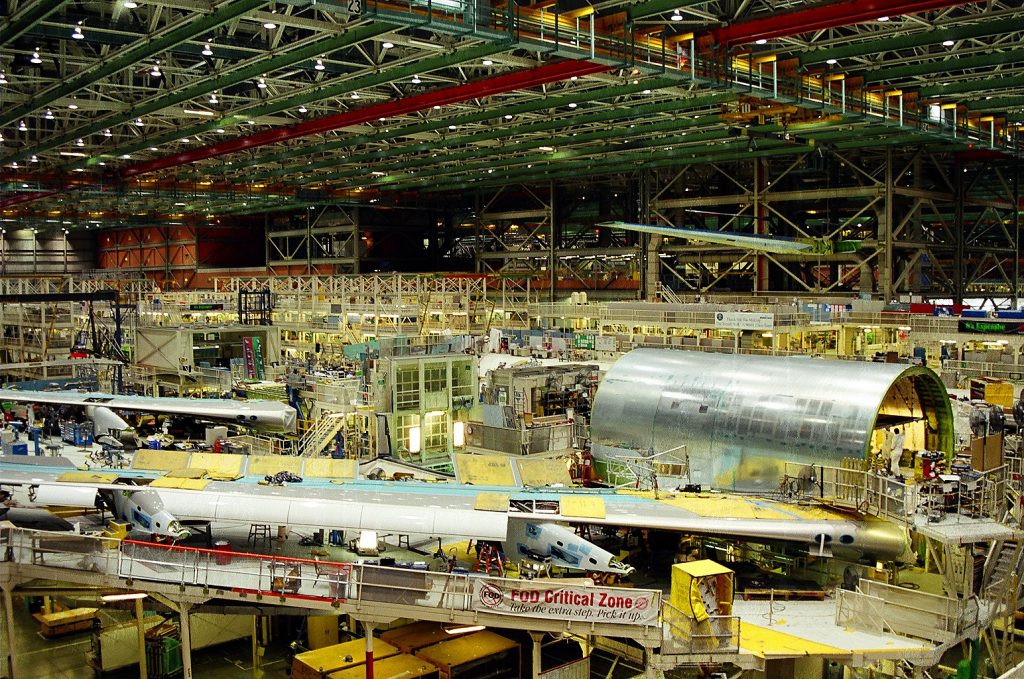Aerospace industry places unique demands on holemaking technology

Plan ahead to get tooling that can handle today’s new materials, say Nate Craine and Greg Torres, of Allied Machine & Engineering
The aerospace industry is bigger than ever. As more and more people rely on air transport, the Airbus Global Market Forecast predicts the need for 33,000 new passenger and freighter aircraft in the next 20 years.
Between recent space endeavors and increasing air traffic, fabricators are constantly faced with new problems to solve.
In aerospace, the parts needed are often unique or newly designed and the deadlines are tight. With materials constantly changing, fabricators must be able to create new ways of safely and effectively drilling through them in as short a time as possible.
At Allied Machine & Engineering, engineers deal with these challenges every day and have a long history of success in the aerospace industry.
Demands of the aerospace industry
Aerospace technology relies heavily on specially made parts and new or changing designs. Creating parts for a craft that must regularly survive high-speed, high-altitude, and/or space conditions requires working with specialized materials and unique problems. Parts for air and spacecraft are made ever lighter and longer lasting.
As the leaders of the industry come up with new ideas, the fabricators are faced with tight deadlines to create and assemble something that has never been made before.
The aerospace industry calls upon holemaking technology to drill through engine components, hydraulic manifolds, and any interior or exterior material that must be drilled and assembled.
While the holemaking industry has been drilling holes through steel for decades, titanium, high temp alloys, and composite materials are entirely different materials that do not behave well under the usual drilling techniques.
Using general purpose drill tools on these newer materials is akin to using a household drill bit on concrete. It won’t be terribly effective and it certainly won’t last very long.
Where a fabricator may be able to drill over 1,000 one-inch holes into standard materials without a specialized drill they might be lucky to get 100 holes into the current composite materials before the drill wears out completely.
Therefore, holemaking technology has had to evolve along with the aerospace industry in order to keep up.
Meeting today’s standards

Engineers need to work with fabricators to find the best tools for the job. Making new drill bits with specialized coatings and substrates to survive cutting today’s materials is an everyday challenge.
New and experimental parts sometimes need tools with customized cutting edges, and today’s lightweight materials call for new substrates, coatings and edge preps.
Other times, more power is called for behind the machines, needing more Z-Axis thrust in addition to a better drill to make it through a composite material.
In the worst case scenario, if done improperly or with inadequate tools, the material or drill can melt or crack.
Otherwise the tool might not be able to complete the hole or will wear out after only a few, wasting time and money in frequent replacement.
In order to fabricate exactly what is needed, manufacturers must work closely with the original engineers on the project.
To keep up with the industry, blueprints and knowledgeable engineers must be matched with tools and realistic procedures that can get the job done in a timely fashion and on or under budget.
Proof of concept

As an example, in a case study at Allied Machine & Engineering, a customer needed to make high quality precision parts for commercial, military, and space components made out of stainless steel.
Once production of their order started, they used five different tools in a multi-step process to complete the job. Each part took 18 minutes and 41 seconds to complete and mixing different tool operations caused issues with quality.
Tooling costs were much higher than expected due to frequent restocking as the tools wore down. Allied recommended one tool that could do the same job in 30 seconds per part and saved the customer $81,684 per year.
In another case, a fabricator machining landing gear was using an ineffective tool that took 15 minutes to drill a hole and only lasted through two parts before the tool needed to be replaced.
Each new head cost $5,000, simply not feasible within their budget and deadline.
The recommended change reduced the drill time to one minute and 20 seconds per part with a tool life of 43 holes before replacement.
The recent acquisition of Wohlhaupter, a world-renowned German manufacturer of precision boring tools, allows Allied Machine to resolve even more complex applications with their offering of high-precision digital boring heads.
Finished goods inventory of Wohlhaupter boring tools has more than doubled in the US as Allied prepares for the increased demand for product by aerospace companies that often comes as a result of those last minute, critical decisions.
Planning ahead
This is the kind of knowledge and innovation that is necessary in today’s aerospace industry. Fabricators have to be creative and fast, ready to take on whatever the industry can throw at them with a clear head.
Companies like SpaceX and Blue Origin are launching noteworthy and experimental projects using cutting edge technology and materials.
Companies like Boeing and Airbus are pushing the boundaries of current technology to make the most powerful and efficient aircraft.
The holemaking technology that is used to cut and assemble these projects must keep up with the leaders of the industry.
The qualified engineers at Allied Machine & Engineering are working with those leaders in order to provide the latest in technological advances and meet the challenges.

